L.A. Kelley's Blog, page 21
April 25, 2015
Book Review: A Nice Little Place on the North Side by George F. Will
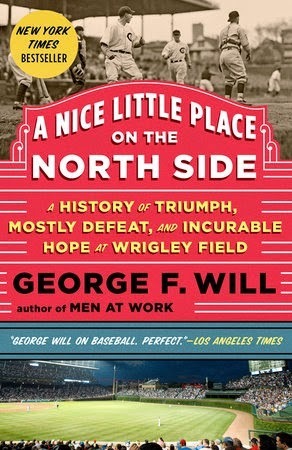 A Nice Little Place on the North Side
What does a female bear taking birth control have in common with the World Series? No cubs. (p. 29)
A Nice Little Place on the North Side
What does a female bear taking birth control have in common with the World Series? No cubs. (p. 29)
Spring is in the air. With it comes the sound of a crack of a baseball bat to be closely followed by the gnashing teeth of Chicago Cubs fans as the team tanks another season. George Will, better known for his political commentary (and ubiquitous bowtie), has written an enjoyable history of the team and begs to ask the question, why can’t they win another Series?
“...there is a lot of losing in baseball, even for the best teams. If you can’t bear losing, find another sport. And if you do not much mind losing, or if you actually rather enjoy it, you should feel right at home in Wrigley Field.” (p. 136)
A Nice Little Place on the North Side goes beyond a simple litany of famous and infamous fans, games, and players. Although, I have to admit I was fascinated to find out Jack Ruby once worked at Wrigley Field as a vendor known for “nefarious sales.” Will attempts to explain the mystique of the Cubs; obvious to inhabitants of Chicago, but beyond the understanding of anyone else. The fans devotion to Wrigley Field is legendary. As Will notes, every once in while a person in the front will even sneak in the ashes of a dearly departed and cast them into the wind. Ushers tend to look the other way. Cubs fans, Will wryly points out, are the least sensitive to losing streaks in all of Major League Baseball. Winning to please is obviously not a strategy in the team’s game book.
Will goes on to detail famous owners such as Spalding (of sports equipment fame) and Wrigley (chewing gum, natch), and how baseball became big business. His section on beer is very entertaining. Apparently, attendance at Cubs games is four times more sensitive to beer prices than ticket prices. He also includes a brief discussion of the psychology of sports fans and how even being part of a fandom for a losing team promotes a feeling of community.
How’s about dem Cubbies? Will the team ever win another series? Eh, maybe not, but it won’t be because of the lack of devoted fans. This book is an enjoyable read for baseball lovers. There is plenty of sports trivia and descriptions of games. I recommend it to anyone who follows the Cubs or ardently loves a hapless sports team for inexplicable reasons. It would also be appropriate for anyone who loves such a woeful individual. The book won’t completely explain his or her madness, but may increase one’s sympathy.
I received this book from Blogging for Books for this review.
Published on April 25, 2015 14:19
April 8, 2015
Book Review: My Life in Middlemarch by Rebecca Mead
 Well-loved books stick through a lifetime, the words hot-glued onto the reader’s soul. The book Middlemarch by George Eliot had this effect on the author Rebecca Mead. She delves deeply into Eliot’s upbringing and how it influenced the novel’s interpretation of love, marriage, hope and finding meaning in life. She elegantly weaves comparisons between Eliot’s life and the characters of the novel. Although written in the nineteenth century, Mead argues Middlemarch in many ways incorporates modern themes, especially, “a young woman’s desire for a substantial, rewarding, meaningful life.”
Well-loved books stick through a lifetime, the words hot-glued onto the reader’s soul. The book Middlemarch by George Eliot had this effect on the author Rebecca Mead. She delves deeply into Eliot’s upbringing and how it influenced the novel’s interpretation of love, marriage, hope and finding meaning in life. She elegantly weaves comparisons between Eliot’s life and the characters of the novel. Although written in the nineteenth century, Mead argues Middlemarch in many ways incorporates modern themes, especially, “a young woman’s desire for a substantial, rewarding, meaningful life.” Mead read Middlemarch several times over the course of decades each time gleaning new insights. As she says, “My Middlemarch is not the same as anyone else’s Middlemarch; it is not even the same my Middlemarch of twenty-five years ago...we each have our own internal version of the book, with lines remembered and resonances felt.” No explanation is necessary. Anyone who had ever deeply loved a novel has felt exactly the same way.
Quibbles and Bits The title and the publisher’s blurbs can easily lead the prospective reader to suppose that Mead intended to draw deep parallels between her life and the novel, describing how lessons in the pages reflected changes in her own condition. This isn’t the case. This is an articulate, intelligently written dissection of a novel, but very little of Mead’s own life is glimpsed.
My Life in Middlemarch is extremely well-researched and written, but I don’t believe it would hold much interest to the casual reader of fiction. However, it would make an excellent companion piece to anyone currently reading Middlemarch, or interested in literary analysis, or any fan of nineteenth century literature in general.
I received this book for free from Blogging for Books in exchange for this review.
Published on April 08, 2015 15:30
March 24, 2015
Of Love and Vengeance by Louise Lyndon - 99 Cent Sale and Rafflecopter Giveaway
 99 Cent SaleScroll down for a chance to win an ebook of Of Love and Vengeance
99 Cent SaleScroll down for a chance to win an ebook of Of Love and VengeanceForced to marry Lord Aymon to ensure her nephews survival, English Lady Laila vows undying hatred for the Norman she holds responsible for so many deaths. Discovering Aymon has committed an act of treason gives her the chance to seek vengeance he deserves. But will Laila really let Aymon die once she learns the truth?
A hardened Norman warrior, Lord Aymon has lived through atrocities no man ever should. With the invasion of England over, all he wants is a quiet life and a wife who will give him heirs and obey his every command. Instead, he finds himself wed to feisty and outspoken Laila. But when she learns the truth of his treasonous act, can Aymon count on her to keep his secret?
Excerpt:
Aymon caught a flicker of movement from a window on the second story. “I think we’re about to meet the welcome party.” An arrow zoomed toward him and landed on the pommel of his saddle. A half an inch closer and he would no longer be able to sire children. As if in demonstration of his ability with the bow and arrow, the shooter fired again. This time directed toward Hugh. The second arrow too came within a half an inch of his friend’s manhood.
“You missed!” Aymon called toward the shooter. He questioned his stupidity for mocking someone with such a good aim.
“You want me to show you how good an aim I really am?” a woman’s voice echoed out across the yard.
“Bloody hell,” Hugh half cursed, half laughed. “Where does a woman learn to shoot like that?”
Aymon was shocked and admittedly a little impressed a woman had such remarkable shooting skills. He could use such a sharp shooter on his side in battle. After all, it was better to have someone so skilled firing for you than at you.
Aymon raised his black leather gloved hand in surrender. “No. I’m firmly attached to my balls, thank you very much.”
“Who are you?” the shooter demanded. “And what do you want? There is nothing of value here for you to steal. Be on your way, man, and leave me in peace.”
“Some would say a female is of value,” Aymon drawled sardonically.
A second arrow lodged firmly on the pommel between his legs.
“I do not give third chances. I’ll give you to the count of three to leave. Or else you will find an arrow straight through your heart.”
Aymon’s warhorse whinnied, and he fought to control the beast whose temperament was as black as his coat. “Put down your weapon!”
“One!”
“We mean you no harm!”
“Two!”
“I am Lord Aymon, and this is Lord Hugh. I’ve come to claim what is rightfully mine.”
Silence.
The two men looked at one another unsure what to do. “Should we storm the building and lay claim to what is yours?”
Aymon shook his head. He dismounted but never took his eyes from the door to the manor. “She will soon make her appearance.”
Hugh, too, dismounted. “How can you be so sure?”
Aymon looked at his friend. “We do not have arrows through our hearts.”
*****
a Rafflecopter giveaway
*****
 Louise grew up in country Victoria, Australia, before moving to England, where for sixteen years she soaked up the vibrancy of London and the medieval history of England. She has since returned to Australia and now lives in Melbourne.
Louise grew up in country Victoria, Australia, before moving to England, where for sixteen years she soaked up the vibrancy of London and the medieval history of England. She has since returned to Australia and now lives in Melbourne.In 2013, Louise won first prize in the historical romance category of the Crested Butte Sandy Writing Contest for her story, The Promise, which has since been retitled and is now known as, Of Love & Vengeance.
On December 19, 2014, Louise's debut novel, Of Love & Vengeance, a historical romance set in medieval England at the time of the Norman invasion, went on world wide release. It is published by The Wild Rose Press. On January 1, 2015, Of Love& Vengeance, hit the paid best seller list on AMAZON UK. Louise is currently working on her second novel.
When not writing, Louise can be found covered in mud, crawling under barbed wire and hoisting herself over twelve foot walls!
Where to find Louise Lyndon:EMAIL: louise_lyndon@yahoo.com
WEB: www.LouiseLyndon.com
BLOG: http://louiselyndon.blogspot.com
FACEBOOK: www.facebook.com/pages/Louise-Lyndon/...
TWITTER: https://twitter.com/LouiseLyndon1
PINTEREST: llyndon3513
GOODREADS: https://www.goodreads.com/LouiseLyndon
Where to find Of Love and Vengeneance:AMAZON US: http://amzn.to/1zW0SZ3
AMAZON UK: http://ow.ly/GGmSn
The Wild Rose Press http://ow.ly/FT0oKNook: http://bit.ly/1E35qRb
Kobo: http://bit.ly/1rd3y2C
iBooks: http://bit.ly/1Hq9Yh7
Google: http://ow.ly/GGmWb
Published on March 24, 2015 20:17
March 19, 2015
Book Review for This is What you Just Put in your Mouth? by Patrick Di Justo
 Amazon Link
“Don’t stick that in your mouth, you don’t know where it’s been.” - Mom.
Amazon Link
“Don’t stick that in your mouth, you don’t know where it’s been.” - Mom.
Di Justo and my mother would have gotten along just fine. In This is What you Put in your Mouth? he details the surprises inside everyday things either stuffed in our pie holes or slathered on our person.
The book is divided into two parts. The first deals with items eaten, drunk, or inhaled. From the book’s title one might get the idea the author wags a literary finger advising us to cast suspicious eyes at everything on the dinner plate. Not so. Di Justo’s background is a reporter for Wired magazine. He is simply driven by curiosity and tries to answer the question. What the heck is in this thing?
Each item selected has a clear explanation of the ingredients easily understandable by the layman. Most also include an interesting backstory on how or why the item was chosen. Di Justo is no snob. He admits to a love of A-1 Sauce and then includes an explanation of the ingredients with the help of chef, Alton Brown. As Di Justo states, “If you’re looking for shocking stories of the gigantic corporate conspiracy to poison America through its processed foods, you’re reading the wrong book.” His refreshing attitude is that these products are a part of the world “and you are better off knowing what is in them rather than not knowing.”
The second part of the book deals with everyday items that are not consumable. There are some surprising ingredients. Some I found charming...the cracking pop from color-flame artificial fire logs comes from birdseed. Some I found creepy...leave the Cover Girl LashBlast Luxe off if having a cranial MRI. According to Di Justo, the amount of dark metallic pigment can screw up the picture and be mistaken for a melanoma. Again, backstories produce interesting tidbits. For instance, Play Doh is opaque to x-rays. I don’t know why I find that amusing. More amusing was the author’s personal test with less than flattering results of Just for Men hair color.
I found the book to be a quick enjoyable read, lacking the preachy high-handedness of most books of this genre. Although, I must admit I’m relieved Di Justo didn’t write about Little Debbie Oatmeal Creme Pies. I’d rather not know what’s in them. My head already understands they’re bad for me, but my heart isn’t ready to drop kick them off my personal food pyramid.
I received this book from Blogging for Books in exchange for a review.
Published on March 19, 2015 06:24
March 4, 2015
Book Review: Video Game Storytelling: What Every Developer Needs to Know About Narrative Techniques by Evan Skolnick
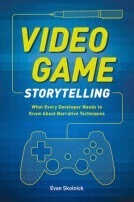 Video Game Storytelling
Video gaming has come a long way. Once upon a time Pac-Man raced around an uncomplicated maze. The gamers great quest was to get the little guy to swallow all the beads before being eaten by a ghost. It was mindless fun, but hardly epic storytelling. Times have changed. Video games now can contain large casts of characters complete with complicated backstories. With avatars, the players enter through a fictional portal to become actual participants in a digital realm.
Video Game Storytelling
Video gaming has come a long way. Once upon a time Pac-Man raced around an uncomplicated maze. The gamers great quest was to get the little guy to swallow all the beads before being eaten by a ghost. It was mindless fun, but hardly epic storytelling. Times have changed. Video games now can contain large casts of characters complete with complicated backstories. With avatars, the players enter through a fictional portal to become actual participants in a digital realm. Evan Skolnick has produced a very readable guide to the storytelling involved in the creation of these worlds. The book is divided into two parts. Part I is called Basic Training and includes a solid wrap-up of writing techniques. He makes the case that conflict is at the heart of every story and includes very clear explanations about such things as transitions, plot points, and exposition. Each description is punctuated with examples from video games. I found the chapter on believability particularly interesting as he discusses character consistency and when and how to break the rules.
Part II, The Trenches, delves into some of the nitty gritty of video game storytelling. The book does a thorough job detailing all the different facets a writer must consider in order to create believable story, character, and environment. Skolnick also addresses the team aspect of working with concept artists, programmers, musicians, along with the audio engineers who produce the sound effects. He includes a useful example of a character description document needed by team members to maintain consistency during development.
This is well-thought out and well-crafted book. I liked the layout and extent of material covered and would recommend it to anyone interested in developing video games or simply writing in general.
Picky Quibble This has nothing to do with the content matter, but take a gander at that cover. Whoever approved the blah design should be ashamed. Video gaming revels in vibrant colors and excitement. This cover looks like it was done by middle schoolers in a summer camp class taught by volunteers at an underfunded community center. Don’t be dissuaded from a purchase. While the cover is terrible, the contents are well worth it.
I received this book from Blogging for Books in exchange for a review.
Published on March 04, 2015 16:18
February 7, 2015
Return of the Mockingbird
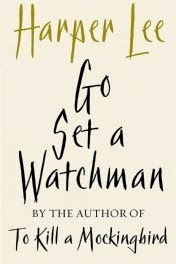 The literary world was rocked this week by news that a lost Harper Lee manuscript reemerged. To Kill a Mockingbird was always touted as the author’s first and only book. Go Set a Watchmen tells the story of Scout as an adult. Lee supposedly wrote it first, but the adult Scout’s interactions with Atticus so entranced the editor that he convinced her to set down the childhood story. The rest is publishing history. I have great fondness for To Kill a Mockingbird, a book I read in school. It had a spunky character in Scout at a time when girls in stories were generally relegated to being sweetly submissive to the boys. It was also one of the first assigned readings that was gripping and relevant rather than dull and preachy. I put more trust in my teachers after that.
The literary world was rocked this week by news that a lost Harper Lee manuscript reemerged. To Kill a Mockingbird was always touted as the author’s first and only book. Go Set a Watchmen tells the story of Scout as an adult. Lee supposedly wrote it first, but the adult Scout’s interactions with Atticus so entranced the editor that he convinced her to set down the childhood story. The rest is publishing history. I have great fondness for To Kill a Mockingbird, a book I read in school. It had a spunky character in Scout at a time when girls in stories were generally relegated to being sweetly submissive to the boys. It was also one of the first assigned readings that was gripping and relevant rather than dull and preachy. I put more trust in my teachers after that. Naturally, this announcement has all fiction lovers in a tizzy. The discovery of a new work by Lee raises many questions and reads like a piece of fantasy itself. How can a manuscript get lost for over fifty years? Surprisingly, for those of us who remember life before word processing, this is the least mysterious aspect of the puzzle. Back in the fifties when this book was supposedly written, everything was done on a typewriter. If you wanted a copy you slipped in a piece of carbon paper or you had a typist create a duplicate. Nobody had access at home to a copy machine or duplicators, as they were called. Even most businesses didn’t have them. It wasn’t unusual for a manuscript to be lost in a fire, misplaced, or even eaten by a rambunctious pet dog. More than one author back then shed copious tears over work tragically gone forever.
 However, Go Set a Watchman was apparently attached to the original manuscript of To Kill a Mockingbird and just discovered by Lee's lawyer. Reports are murky as to where it’s been all these years. Misfiled under Accounts Receivable? Stuffed under the mattress? Seriously? No one touched the original manuscript of the Great American Novel in over fifty years and noticed another haphazardly stuck on the back? You’d think somewhere along the way, a curious person would have picked it up, dusted it off and suggested since To Kill a Mockingbird sold over 40 million copies, by gum, this other one might garner a few fans, too.
However, Go Set a Watchman was apparently attached to the original manuscript of To Kill a Mockingbird and just discovered by Lee's lawyer. Reports are murky as to where it’s been all these years. Misfiled under Accounts Receivable? Stuffed under the mattress? Seriously? No one touched the original manuscript of the Great American Novel in over fifty years and noticed another haphazardly stuck on the back? You’d think somewhere along the way, a curious person would have picked it up, dusted it off and suggested since To Kill a Mockingbird sold over 40 million copies, by gum, this other one might garner a few fans, too. For me, the greatest mystery was why Lee didn’t rewrite the book. After all, the story was already in her head. Lee has stated in the past she never felt the need to write again after To Kill a Mockingbird, but rumors circulated over the years that her childhood neighbor and close friend, Truman Capote had a heavy hand in the editing. A second book would surely have put those stories to rest. I admit I’ve puzzled over this. Lee never wrote for enjoyment? Not even for herself? I write every day. Even if Congress passed a law forbidding me from ever publishing, I would still write. I’d write whether anyone read my books or not. Of course, I’ve never penned a classic. Perhaps, something that momentous changes you. Much is gained with overwhelming success, but much may be lost in the process.
Recently, Lee has suffered both the devastating loss of her sister and a stroke. Rumors persist her health is less than ideal. Her lawyer stresses that everything is hunky-dory, but this is the same lawyer who miraculously stumbled upon the missing manuscript. Not much comes from the author herself, and no public sightings. It leads one to wonder if any statements issued in Lee’s name really came from Lee. As I said, mysteries abound.
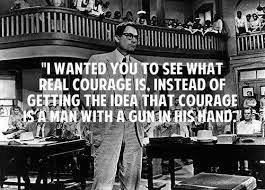 For the present, the curious discovery of Go Set a Watchman is all quite a head scratcher. Its publication may put to rest the belief that Lee was a one hit wonder, or perhaps, it will raise even more questions than it answers. I’ve already purchased my advanced copy and look forward to getting reacquainted with Scout. I wish you all the best, Miss Lee, and I hope you are looked after by people who are only concerned with your well-being and harbor no hidden agendas.
For the present, the curious discovery of Go Set a Watchman is all quite a head scratcher. Its publication may put to rest the belief that Lee was a one hit wonder, or perhaps, it will raise even more questions than it answers. I’ve already purchased my advanced copy and look forward to getting reacquainted with Scout. I wish you all the best, Miss Lee, and I hope you are looked after by people who are only concerned with your well-being and harbor no hidden agendas.
Published on February 07, 2015 06:56
January 10, 2015
Book Review: Provence, 1970 by Luke Barr
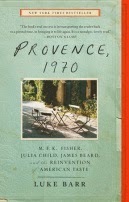 Provence, 1970Evolution is a funny thing. Most times it creeps along at a snail’s pace, but every once in a while you can jab a finger at the calendar and say, “Aha! It started there.” Such it is with the evolution of American cuisine. It’s hard to believe, but it wasn’t that long ago when food was bound by strict regional borders. People in Los Angeles wouldn’t recognize jambalaya if it stood up and shouted “True dat!” Bagels outside of New York City were represented by Lenders. They make a very fine doorstop, but cardboard has more flavor. Ahi? Burritos? Jalapeño? Quinoa? Masala? Funny kind of words…They’re food, you say? And where exactly would I get the ingredients? Certainly, not nearby.
Provence, 1970Evolution is a funny thing. Most times it creeps along at a snail’s pace, but every once in a while you can jab a finger at the calendar and say, “Aha! It started there.” Such it is with the evolution of American cuisine. It’s hard to believe, but it wasn’t that long ago when food was bound by strict regional borders. People in Los Angeles wouldn’t recognize jambalaya if it stood up and shouted “True dat!” Bagels outside of New York City were represented by Lenders. They make a very fine doorstop, but cardboard has more flavor. Ahi? Burritos? Jalapeño? Quinoa? Masala? Funny kind of words…They’re food, you say? And where exactly would I get the ingredients? Certainly, not nearby. Taste and refinement in food preparation were represented by French cuisine. Quel domage, but the American palate was certainly not up to par. Even the most celebrated food writers had an unabashed love affair with France. M. K. F. Fisher, Julia Child, and James Beard sung its praises. Then came that fateful summer of 1970 in Provence when all that changed.
Luke Barr is the great-nephew of the late food writer M. K. F. Fisher. With access to her private correspondence and the letters from other food writers during that summer, he pens an affectionate account of how their changing attitudes about what’s on their plates affected a cultural revolution in American eating habits. French classical cuisine had always been more descriptive and fussy than precise. By 1970, social upheaval was rearranging the fabric of America. Old prejudices were being challenged every day with the need to question authority. M. K. F. Fisher and the other American writers began to grow disillusioned with stodgy gastronomic regimes and the steadfast insistence the Old World way was the only way. Why not bring change to cooking as well?
Provence, 1970 tells the story of a group of charming, argumentative, people with gusto for both life and food who stood at the forefront of the revolution in American cooking. It’s an enjoyable book, written with a great eye for detail. Barr weaves together their stories as they each come to a revolution in thinking where “…The result would be something entirely new, combining the je ne sais quoi and self-assurance of France and the open-minded, can-do accessibilityof America.”
One warning: Do not read this book when hungry.
Excerpt As I cooked in the kitchen of La Pitchoune, I could sense their presence, all of them—Julia at the stove; Paul opening wine; Beard, M. F., Jones, and Olney gathered around, offering advice and opinions and judgments. They spoke to me in their books and recipes, in the same way that my mother’s voice accompanies me in the kitchen. It was my mother, who died a few years ago, who taught me how to cook. And when I make something she made for me, or with me, I feel her presence—not in any littoral or even ghostly way, but in the form of an atmospheric shift, an emotional warmth. It is striking how cooking binds us to the past, and to the people we love, even when they’re gone.
I received this book from Blogging for Books for this review.
Published on January 10, 2015 08:16
December 31, 2014
Book Review of What If? by Randall Munroe
 It’s a New Year. Time to scrape the sludge from the old noggin and find answers to those questions that have kept you awake all night. Well, they’ve kept me awake, anyway. I really need to find a hobby.
It’s a New Year. Time to scrape the sludge from the old noggin and find answers to those questions that have kept you awake all night. Well, they’ve kept me awake, anyway. I really need to find a hobby.Randall Munroe is a former NASA roboticist and creator of the webcomic xkcd. His tackles esoteric questions both large and small with a cheeky sense of humor and delightfully irreverent stick figure drawings. Unlike dry, dusty scientific textbooks Munroe takes a humorous approach, dealing with matters of physics, chemistry and biology—even daring to tackle matters of the heart. Einstein would never have tried to determine the possibility of a random encounter with a soulmate if one actually existed. (Sorry to say it is slim to none, so you better hold on to your current heartthrob while you can.)
His approach to scientific inquiry is both amusing and thought provoking. Who knew a continuously power hairdryer in a box is the secret to building a time machine? Warning: don’t try this at home with your Conair since it requires an indestructible casing and an unlimited power source. Also it is definitely not a good idea to fire off a nuclear device in the eye of hurricane to vaporize it. Apparently, this question gets asked so often to the National Oceanographic and Atmosphere Association that they even have a paper on the subject.
Some questions are unexpectedly thought provoking. If every human being disappeared from the face of the Earth, the last artificially created light source would take centuries to go out. No, it’s not the Energizer Bunny. Some radioactive waste products are melted, mixed with glass, and formed into a solid block. In the dark, these blocks glow blue. The last artificial light source would be a pile of toxic waste. Mankind’s crap will outlive all other technological achievements. Ha! Made you think, didn’t I?
All the question in the book have been submitted by fans of his website which does make one wonder about their mental stability. After all, who needs to know if you dial a random person and say “God Bless You” what is the probability that person has just sneezed? Oh, all right, I do. And I was tickled pink to hear the answer is 1 in 40,000.
Despite the sciency stuff, this book is an easy, fun read and the stick figures are cute with a quirky charm. The biggest fault I found is the author fails to address the one question that has haunted me for years. Why are cologne commercials always stupid and make no damn sense?
Published on December 31, 2014 15:59
December 9, 2014
Author Marlow Kelly Writes About the Strong, Independent Bruce Women
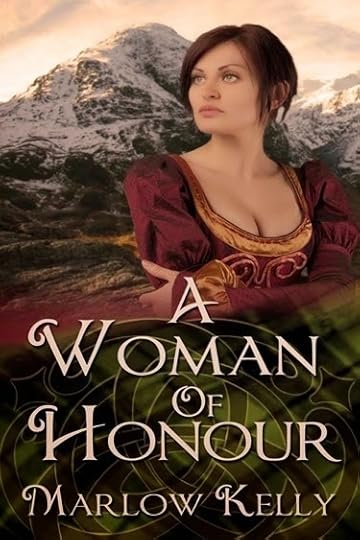 A Woman of Honour
A Woman of Honour
Duncan Campbell wakes to discover he is imprisoned with a woman in his enemy's dungeon in the Highlands of Scotland. The disenchanted warrior hopes his last few moments on earth will be spent in the arms of the sweet-voiced Isabel. If only she will cooperate.
Isabel Douglas has no intention of obliging the crude captive. The penniless noblewoman considers herself too tall and thin to be desirable. She intends to become a nun. But first, disguised as a boy, she must deliver an important letter to Scotland's hero in hiding, King Robert the Bruce.
Together, the pair make a daring escape that plunges them into the bleak countryside in the middle of winter. In the struggle to survive, they learn the true strength of their feelings for each other. But when Duncan's animosity towards the king becomes evident, Isabel must decide between her heart and her country.
Most people have heard of Robert the Bruce. He was the fourteenth century king who led Scotland in their battle for independence against England. What many of you don’t know is that he grew up surrounded by strong women.
His mother, Marjory, Countess of Carrick married a man named Adam Kilconquhar. Marjory was a woman of power, her title awarded by birth not by marriage. When Adam died on crusade in 1270 his friend Robert Bruce (Or Robert de Brus) travelled to her home at Turnberry Castle in Ayrshire to give her the news. Marjory took a liking to Robert and imprisoned him until he agreed to marry her. They were married in 1271. They must have been reasonably happy because they had at least ten children, including three daughters, Christina, Isabel, and Mary.
Isabel Bruce married King Eric II of Norway in 1293, and she was widowed six years later in 1299. She never remarried or returned to Scotland, but chose to live out her days independently as Queen Dowager. It is known that she was a supporter of the church, acted as a mediator in land disputes, and arranged her daughter’s marriage to Valdemar Magnusson of Sweden.
Sisters Christina and Mary were not so fortunate.
After his defeat at the Battle of Methven, Robert sent his wife, daughter, sisters, and Christina’s husband, Christopher Seaton, north to his brother Neil for safety. They were betrayed and captured at Tain in Easter Ross. Neil and Christopher were executed. The rest of the women were sent to England where King Edward I decided their fate. Edward was lenient with Christina, a grieving widow, and she was imprisoned in a convent at Sixhills in Lincolnshire, England.
After her release in 1314 she married Andrew Murray, Andrew was appointed the Guardian of Scotland after Robert’s death. In 1333 the English launched a second invasion of Scotland. And in 1335 English forces besieged Kildrummy Castle. A spirited Christina, now in her sixties, led the defenders holding out until her husband, Andrew, could march north and mount a counter attack. She died in 1357 aged 84.
I feel Mary had the hardest life, when captured by the English, Edward I ordered her to be held in a cage made of wood and iron and suspended from the walls of Roxburgh Castle. She was forced to survive the cold Scottish winters outside with very little in the way of creature comforts. She had no privacy and the only person she had contact with was her guard who was not permitted to converse with her.
Isabella MacDuff who had crowned King Robert I and was travelling with the Bruce women also suffered a similar fate. Her cage was hung from the walls of Berwick castle. It is believed Isabella died during this ordeal.
In spite of the many hardships she endured Mary survived and after her release, in 1314, married Neil (Naill) Campbell, a supporter of Robert. Neil died in 1316. Mary went on to marry Alexander Fraser of Touchfraser and Cowie. One can only hope that the men she married treated her well and that she was happy in her later years. She died in 1323 in her early forties.
As much as I admire the Bruce women they were not the inspiration for my story A Woman of Honour, but it is set against the backdrop of the first Scottish War for Independence. Robert is on the run somewhere in the West of Scotland and the Bruce women have been captured. My heroine, Isabel Douglas, has been ordered by her guardian to travel to the Island of Iona. Where she is to take holy orders and avoid capture by the English. It is only by chance that she finds herself in a dungeon with Duncan Campbell, Niall Campbell’s brother.
********
Excerpt from A Woman of Honour
Duncan Campbell drifted into consciousness and opened his eyes to absolute blackness. He lay perfectly still on the cold, dirt floor listening. A small rustle of fabric echoed in the darkness. He cocked his head, getting a sense of the sound’s location, then rose to his feet.
“Tell me who you are before I tear you apart,” he roared, seizing his opponent. Whoever it was didn’t answer, just silence. A fist punched him on the nose. Pain ricocheted through him, and he grabbed his face. In the dark, he lost his balance and fell in the dirt, cradling his head in his hands.
“Oh my, are you all right?” asked a small voice.
“No, I’m not.”
“You threatened me, and I wanted to give you fair warning I will fight back if you touch me.”
The lyrical voice stunned him. A woman? She spoke Gaelic with a strong, lowland accent. He shook off the pain and asked,
“Where am I?”
“Dunstaffnage Castle. Don’t you remember your capture? I’ve heard of people getting a bump on the head and not remembering their own name. Is that what happened to you? Did you bump your head?”
Lord, she was talkative.
“Is it?”
“I remember I was hit from behind scouting the bast….Are we in the dungeon?” He rose to his feet. “Yes.”
He grunted. On the bright side he hadn’t gone blind. On the other hand they were in a dank, windowless cell with no hope of escape. There wasn’t even a sliver of light coming through the door.
********

About the Author After being thrown out of England for refusing to drink tea, Marlow Kelly made her way to Canada where she found love, a home and a pug named Max. She also discovered her love of storytelling. Encouraged by her husband, children and let’s not forget Max, she started putting her ideas to paper. Her need to write about strong women in crisis drives her stories and her curiosity regarding the lives and loves of historical figures are the inspiration for her characters.You can visit Marlow at www.marlowkelly.com Facebook Twitter Goodreads Pinterest
Published on December 09, 2014 00:30
December 8, 2014
Last stop on the One Enchanted Evening Blog Tour. Drop by...
Last stop on the One Enchanted Evening Blog Tour. Drop by for a chance to win a $20 Amazon gift card.
http://unabridgedandralyn.blogspot.com/
http://unabridgedandralyn.blogspot.com/
Published on December 08, 2014 05:04



